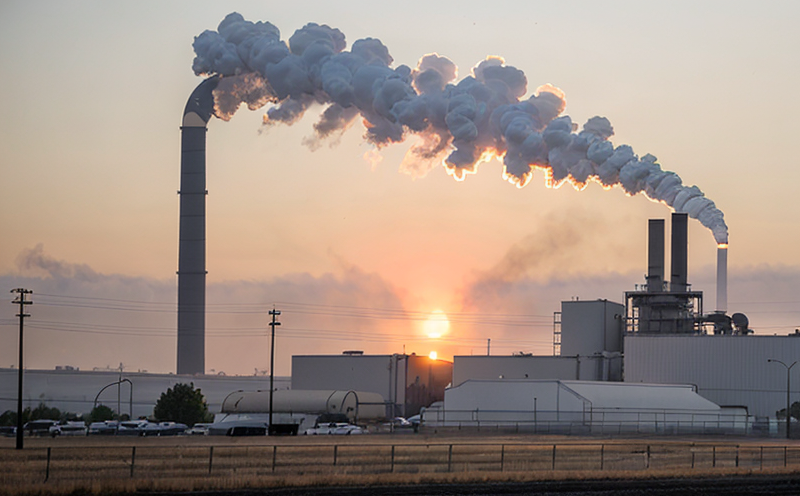ISO 16000 Formaldehyde Testing in Indoor Industrial Air
The International Organization for Standardization (ISO) has developed a suite of standards to address the measurement and control of indoor air quality, with ISO 16000 being particularly relevant for formaldehyde testing. Formaldehyde is a known carcinogen that can be released into the air from various sources such as building materials, adhesives, and finishes used in industrial settings.
The standardization provided by ISO 16000 ensures consistent methodologies across different industries, which is crucial for compliance with local regulations. In industrial manufacturing environments, ensuring that formaldehyde levels do not exceed safe limits is paramount to worker health and safety. The testing of indoor air quality in these settings helps identify potential sources of contamination and allows for timely mitigation measures.
The ISO 16000 series covers a wide range of topics related to indoor air quality, including sampling techniques, analytical methods, and exposure limits. For the specific case of formaldehyde testing, several key aspects are important:
- Sampling Methodology: Sampling for formaldehyde involves capturing a representative portion of indoor air using appropriate samplers. These samplers should be capable of collecting samples over an extended period (typically 24 hours) to ensure accurate measurement.
- Analytical Methods: The most common analytical method used in ISO 16000 is the absorption-hydride generation-flame photometry technique. This method involves converting formaldehyde into methanethiol and then measuring it using a flame photometer.
- Sampling Sites: Sampling points should be strategically chosen to represent the air quality throughout the industrial space, including areas where workers are most likely exposed.
- Data Analysis: Once collected, samples undergo rigorous analysis to determine the concentration of formaldehyde. The results are compared against the relevant exposure limits specified in ISO 16000-5:2018.
The standard also emphasizes the importance of proper specimen preparation and calibration of instruments used during testing. Compliance with these standards ensures accurate and reliable data, which can be crucial for making informed decisions about air quality improvements in industrial settings.
Quality and Reliability Assurance
At our laboratory, we adhere strictly to the guidelines set forth by ISO 16000-5:2018 to ensure accurate and reliable formaldehyde testing results. Our quality assurance processes encompass every aspect of the testing procedure, from sample collection to final report generation.
We employ state-of-the-art equipment calibrated according to international standards, ensuring that our measurements are precise and consistent. Regular calibration checks and proficiency tests further reinforce our commitment to maintaining high-quality standards. Our experienced staff undergo continuous training to stay updated with the latest advancements in analytical techniques and best practices.
Customer satisfaction is a priority for us, and we strive to provide timely and accurate reports that are aligned with industry expectations. By adhering to these rigorous quality assurance measures, we can help our clients make informed decisions regarding air quality improvements in their industrial operations.
Customer Impact and Satisfaction
Implementing effective formaldehyde testing in indoor industrial environments has numerous benefits for both employers and employees. By ensuring compliance with ISO standards, we contribute to creating a healthier work environment, which can lead to increased productivity and reduced absenteeism.
The data obtained from these tests helps identify potential areas of concern, allowing for proactive measures to mitigate risks associated with formaldehyde exposure. Employers who invest in such testing demonstrate their commitment to employee health and safety, fostering trust among staff and enhancing overall workplace satisfaction.
From an operational perspective, adherence to ISO 16000 standards ensures regulatory compliance, thereby reducing the risk of legal challenges or penalties. This can also improve the reputation of the company in terms of corporate social responsibility (CSR) initiatives.
Competitive Advantage and Market Impact
In today's competitive market, maintaining a safe and healthy work environment is not only an ethical requirement but also a strategic advantage. By implementing ISO 16000 formaldehyde testing protocols, companies can stay ahead of regulatory changes and industry trends.
Compliance with international standards like ISO 16000 demonstrates to customers that the company takes air quality seriously, potentially leading to enhanced brand reputation and increased customer loyalty. Additionally, proactive measures in managing industrial air quality can help attract top talent who prioritize working conditions.
The ability to provide accurate and timely formaldehyde testing results positions us as a trusted partner for industries reliant on ISO standards. This trust translates into long-term business relationships and opportunities for expansion within the sector.





